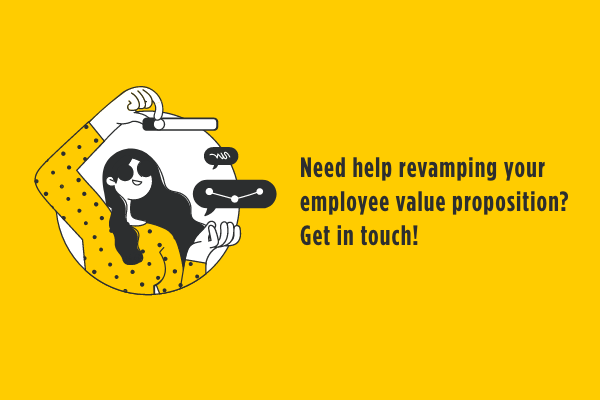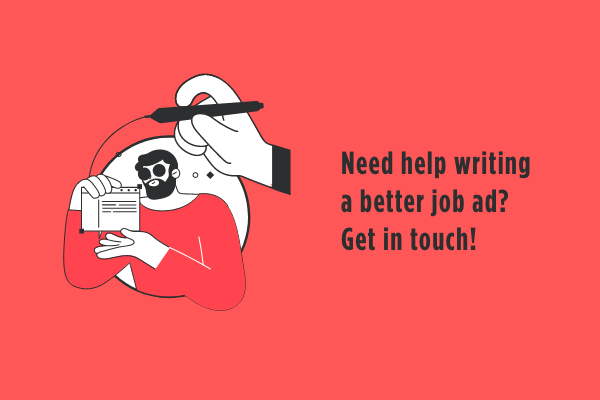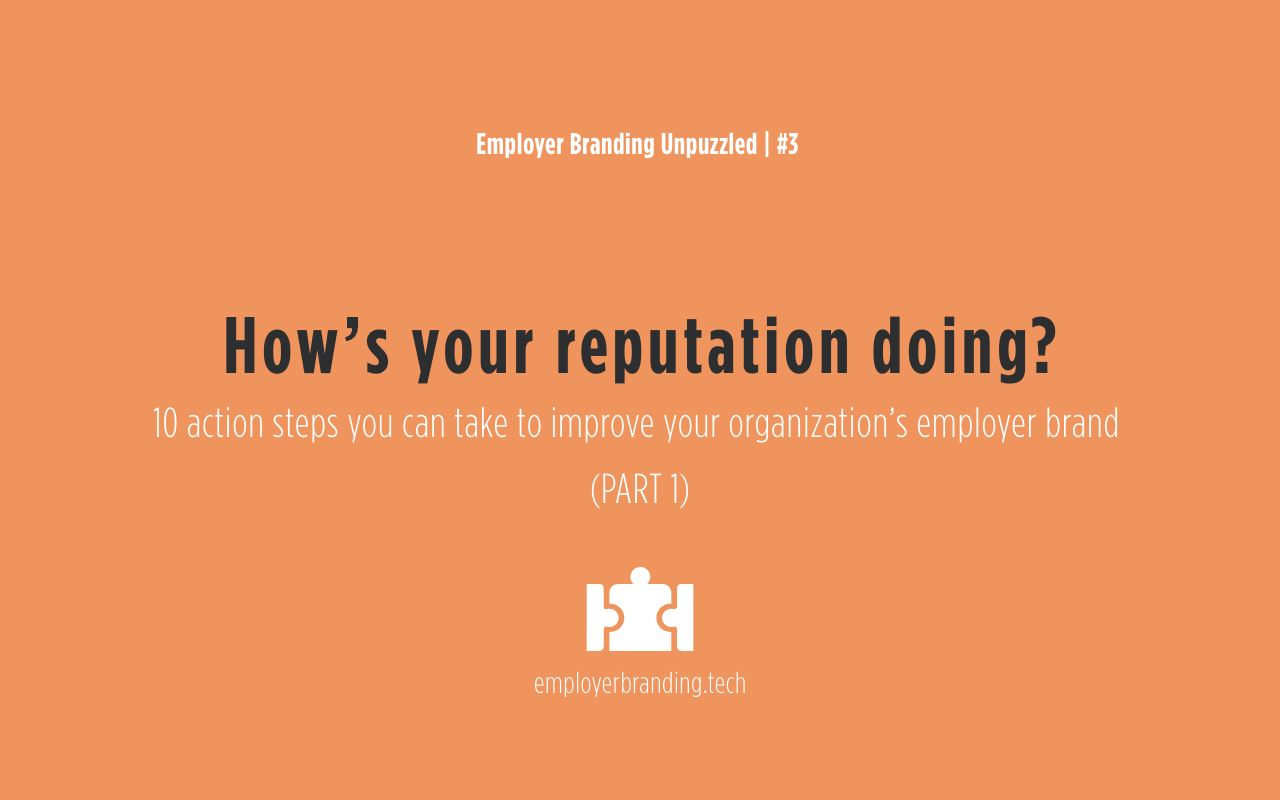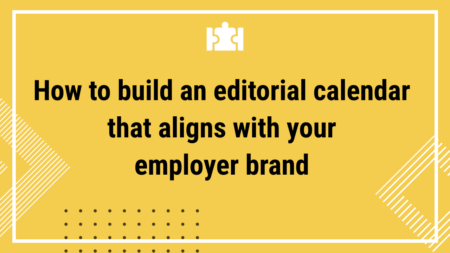Between last-minute work stuff and your next weekend getaway, ask yourself this – How’s your reputation doing? There are a million things you can do for your organization in terms of #employer branding. We get it, prioritizing can be tough! But you need to start somewhere if you want to attract and retain candidates that speak your company’s language.
Read more to find out where to begin, what you can do, and how you can improve the overall perception people have of your organization.
Introduction
No matter how much you’ve invested in employer branding so far, your company already had a reputation and a brand; whether it’s a great place to work or not, an overall perception exists. What you do with it is up to you. Do you want people to enjoy working with you? Do you want to retain them for longer than 6 months? Do you want to increase ROI? Do you want to crush the competition?
Before getting started with any employer branding initiative, it’s important to have goals. Write them down and prioritize them. And after you’ve done that, take action. Here are 10 employer branding action steps you can take to improve or strengthen people’s perception of your organization.
#1 Get the pulse of your current employer brand & conduct an employee survey
One of the simplest, cheapest, and most effective ways to get a feel of your employer brand is with an anonymous employee survey. It will help you understand what your current employees like and dislike about you as an organization. Usually done by HR managers every 12 months, our advice is to do it more often – every 3 months, for example. This way, at the end of the year you can gather all answers (including from the people who left), compare them, and assess them. What can you do with the answers from an internal employee survey?
- Develop an EVP (employee value proposition), which later on will help you pin down the core and honest company values
- Understand what your employees like/dislike about your organization, and implement processes to add improvements
- Find out that one pattern that might slow down workflow ( sometimes it’s a silly one that can be easily addressed)
- Strengthen company culture
- Acknowledge and accept your weaknesses and work your way to fix them
- Improve employee experience
- Measure work satisfaction
As for questions you can ask employees, here are some examples:
- If you were to describe [Company] in one word, what would it be?
- 3 things you like about [Company] & 3 things you don’t like (it’s an anonymous survey, there’s no reason to lie].
- How does working for [Company] feel? Name 3 feelings.
- If you were to describe the people you’re working with, what would it be?
- What’s your biggest achievement since working at [Company]?
- If you were to convince someone to join [Company], what would you say?

#2 Build a unique EVP & use it to attract the right candidates
Also known as an employee value proposition, an EVP is the smartest way of recruiting the RIGHT candidates. The pandemic, followed by The Great Resignation, opened the eyes of many C-level executives who realized it’s a candidate job market filled with possibilities of all sorts and kinds. Without a tailored EVP, you’re going to attract people that will probably leave in 6 months.
On average, an employer spends 33% of an employee’s annual salary to fill an exit. A software engineer, for example, can make up to $100,000 per year. If that engineer leaves the company, the cost of replacement can be as high as $33,000. A well-defined EVP can help prevent that because:
- It helps attract candidates that fit your company culture
- It preserves employee engagement
- It lowers attrition
- It creates a sense of belonging
- It aligns candidate values with the company values
- It helps you find out what makes your company UNIQUE
#3 Build a strong(er) company culture & gain leverage over your competitors
Saying that you’re a “cool” company to work with doesn’t mean that you have a strong company culture. Having random values like “transparency”, “autonomy”, “trust”, etc. written someplace on your website without arguments doesn’t strengthen your culture either. But you know what does? Action. Answer the how: how are you being transparent and autonomous?
Nearly 46% of job seekers assess company culture before applying for an open position, and 86% of them avoid the ones with a negative reputation. 94% of entrepreneurs believe that culture is the key to business success, yet not many of them know where to begin. If you want to build a culture that gives you leverage over your competition, here’s how you can start:
- Build a foundation based on honest principles
- Stay true to your ideas, vision, and values
- As a leader, getting involved matters as it will strengthen beliefs
- Create short and long-term goals for your business
- Communicate goals with everyone on the team
- Lead with purpose to attract the right people
- Walk the talk, and look after your employees
#4 Define your candidate persona & place your bet on targeted content
We’re all human and it’s normal for some people to dislike you. The same thing goes for your company. Whether you like it or not, some of the brightest, most experienced candidates out there may not fit your organizational culture. And that’s ok. You don’t want to hire the best in general; you want the best for your company culture, your values, and your mission.
To make that happen, the first step is to define your candidate persona, also known as your ideal candidate for X job opening. WHO is (are) your ideal candidate (s)? Here’s how you can start:
- Who is your candidate persona? (e.g. age, location, current position, education, experience, social background)
- Why would your ideal candidate change jobs? (e.g. new career challenge, life goals)
- How do they search for a job? (e.g. social media, friends & family, active/passive seekers)
- Who influences their decisions? (e.g. author, role model figure, friends & family, current employer, colleagues)
- What sort of information do they trust? (e.g. social media ads, job ads, corporate job websites, talent networking events)
- What keeps them motivated? (e.g. company projects, company tech stacks, company reputation, financial incentives, work environment, colleagues)
- What skills are you looking for in the ideal candidate? (e.g. soft skills, technical skills)
Following the candidate persona step, move on to crafting amazing content for each individual persona. Introduce them to your company culture and showcase your EVP, the backbone of any employer brand strategy. The more you know about the person that would fit your work environment the better chances you have to attract the right candidates. We are what we attract and we attract what we are – as long as we’re brutally honest.

#5 Strengthen your social media presence & choose your social channels wisely
In 2022, if your company is not online, you don’t exist. However, it takes more than a company website and a LinkedIn page to be seen by the right candidates. For people to see you, your company, and what your company is doing, candidates need to be entertained by the content you post on social media; content that goes beyond basic job ads.
New studies point out that only 20% of active employees feel engaged at work. 71% of C-suite executives believe engagement is the key to success, and overall, engaged employees increase their company’s ROI by 21%. And guess what? That engagement needs to roll out externally, too. From employee-driven content to company teambuilding photos & videos, an active social media presence makes your company feel alive.
The downside is that we’re living in a post-pandemic world where WFH is the new normal. In the absence of face-to-face meetings, coffee breaks, and networking, how can you preserve that aliveness? In simple terms, you get creative! Here’s what you can do:
- Schedule 1 day per month to meet with everyone face-to-face (Make it fun & take photos!)
- Turn employees into brand ambassadors & leverage employee-generated content as posts on social media channels
- Make sure your social posts focus on HOW you do things, not WHAT you do.
- Talk more about your people/team’s achievements on social media, and less about your company’s achievements
- Keep your social content honest, fresh, and interesting!
- Stay consistent & create a bi/monthly social media calendar
- Use paid social media marketing wisely
Now that you know the first 5 action steps you can take to improve your organization’s employer brand, the only thing left to do is to act. The employer branding trends we predicted at the beginning of the year are starting to materialize. They’re morphing from trends to facts. Now, more than ever, your focus should be on transitioning from a presence culture to a culture of trust. More candidates want to work in companies where their values align with the employer’s values. They want to feel included, fairly compensated, and appreciated for who they are as humans and not just for the work they do.
In part II, we’ll talk about the other 5 action steps you can take to improve your organization’s employer brand:
#6 Build a Careers Page & make it stand out
#7 Make your job postings look less like a grocery list & boost candidate engagement
#8 Leverage paid social media wisely & go beyond standard ads
#9 Create a targeted employer branding campaign & attract people that fit your culture
#10 Develop an employer branding framework & crush your competition






